Tree in pot $2000
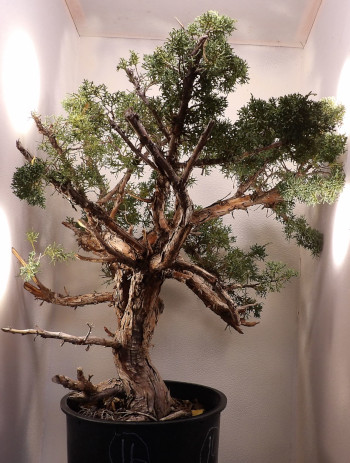
| Articles | Home Page | Images | Order Form | Plant Catalog |
PLEASE NOTE: THE DECIDUOUS SPECIMEN TREES
HAVE BEEN MOVED TO HERE
YOU MAY CLICK ON ANY IMAGE FOR A FULL SIZE PHOTO.
Scroll Down for Species Listed (updated soon!)
Specimen plants are one of a kind offerings. These are larger plants and/or more fully trained plants for bonsai, or plants so rare that they are best sold individually. Each plant is individually described, identified, and pictured. Prices vary according to the degree of training, caliper, and sheer potential for bonsai. This list will be constantly changing, so check back often for new listings. Plants are organized in the same fashion as our regular catalog, alphabetically by genus and species. Please refer to the Plant Catalog for the general species description. Be sure to use each plant's individual name and code number for ordering purposes.
Prices do not include shipping. Please request a shipping quote to your Zip Code Area. Shipping is via Priority Mail. Your shipping quote will be very close to the actual UPS cost plus a small charge for materials. All shipments are guaranteed to arrive safely. California residents will be charged 7.5% sales tax. Some of the specimen are very large and are too big to ship safely. These will be labeled Nursery Pick Up Only.
This is a very exciting development for our nursery. We have been growing most of these plants for many years just to be able to offer exciting potential bonsai. You will find them fully described, including size, shape, caliper, nebari, trunk movement, etc. The strong and weak points of each plant will be listed. Often there will also be a tentative plan described for future development. We hope you will enjoy exploring them!
| Juniperus chinensis 'Shimpaku' #03, 25 year old tree, 3inch
caliper. Size is 36 x 28. Tree with pot $4000 |
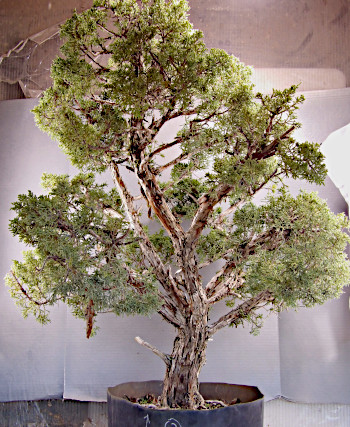 |
| Juniperus chinensis 'Shimpaku' #13, 30 year old tree, 3inch
caliper. Size is 22 x 24. Tree with pot $4000 |
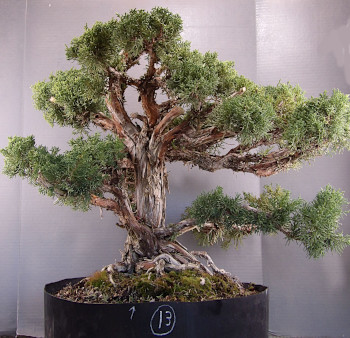 |
Pinus parviflora, Japanese White Pine
We live in a climate that is not favorable for Japanese White Pine,
which are native to cool mountain air and cold winters. After losing
many beautiful trees we finally discovered how to grow them in our hot
dry climate with endless brilliant sunlight. We keep them year round in
outdoor 50% shade cloth houses. Our winters are cold enough, usually
around 20F or lower on the coldest nights. The shadecloth cools the pots
during the summer and prevents leaf scorch. We will be having a few
specimen plants for sale, but I caution you that unless you have
successfully grown them in your area, you are probably going to kill
them.
The photographs were taken in 2024 right after they were pruned, so you can really see the trunks and the structure, but they will look a little naked. They are loaded with buds that will explode the spring of 2013. Most were root pruned and repotted the winter of 2023-24 and are fully established in their plastic cut off nursery pots. They should not be root pruned and repotted if purchased in early spring of 2025, otherwise you may slip pot them and repot during the winter of 2025-26.
Other cultivars of Pinus thunbergii
Nearly all of our specimen black pines are cultivars. Chuck Shane and I obtained many of these cultivars from the collection of John and Sandy Planting who lived in the San Francisco Bay Area. There are several that are completely unknown to the United States. We started low grafting of these cultivars in 1994 to develop enough wood to propagate them commercially. Many of them are corked bark (nishiki kuro matsu), and two of them are particularly outstanding dwarfs! These are Brocade, and Hayabusa. These remarkable little trees begin corking almost immediately and have mature needle length of about 2 to 3 inches, which is easily reduced to 1 to 2 inches. They break buds EVERYWHERE, including even on old wood and for us at least, are very vigorous. All of our trees are low grafted which is especially important for cork barks, so the winged bark goes right down to the base and disappears into the species understock nebari.
Some of the trees were unnamed and we had to resort to a
descriptive name such as 'Two Ribbed'.
Pinus thunbergii 'Mi Nishiki' #09 2000 cutting grown
tree, 3 inch caliper trunk. Size is 16 x 10 inches.
Ready for bonsai pot.
Specimen in 2 gallon pot
$2500
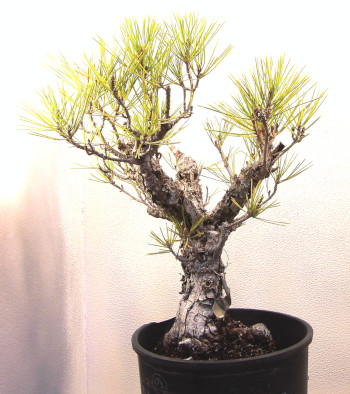
These are very rare dwarf
cork bark Japanese Black Pines that form cork early and form wings
within just a few years. Full needle length is about 3 inches but can be
easily reduced to 2 inches. Unlike other Kuro Matsu, these pines are
very vigorous and will break buds all over, even on old wood. The
budding is so prolific you will have to rub out excess buds each year to
keep them from getting too crowded. All of our cork bark pines are low
grafted, right on the roots of the understock. No Flying Nun wings.
Pinus thunbergii 'Brocade'
#02, 2006 low graft, 2 1/2 inch caliper trunk. Size is
12 x 10 inches.
Specimen in 2 gallon pot $1500 SOLD!
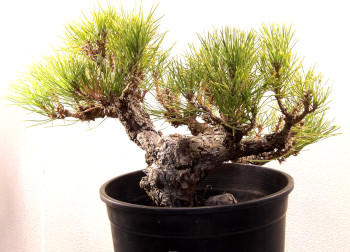
| Pinus thunbergii 'Two Ribbed'
#19, 1996 low grafted tree nice low turn in the trunk. 4
inch caliper trunk. Size is 30 x 22 inches Ready for bonsai pot. Specimen in 3 gallon pot $3000 |
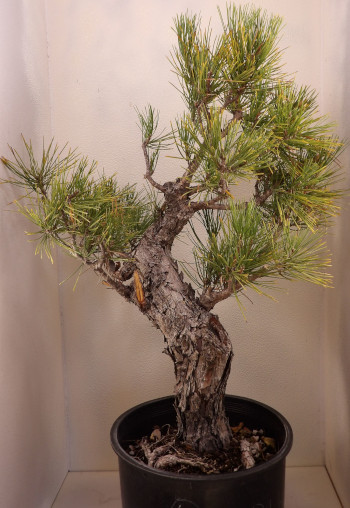 |
Pinus thunbergii 'Yatsubusa'
#24 2006 low graft, 2 inch caliper trunk. Size is 15 x
13 inches. Ready for bonsai pot.
Specimen in 2 gallon pot
$2000
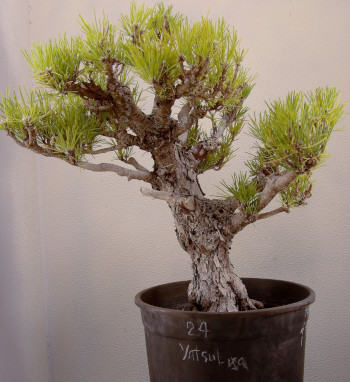
Pinus thunbergii 'Kyokko'
#25, 39 year old low graft , 4 inch caliper trunk. Size
is 21 x 20 inches.
Specimen in 2 gallon pot
$3000
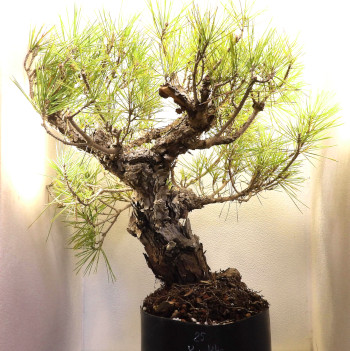
file
Pinus thunbergii 'Mugo'
#26, 25 year old cutting grown tree, 2 inch caliper
trunk. Size is 13 x 16 inches. Ready for bonsai pot.
Specimen in 2 gallon pot
$1500
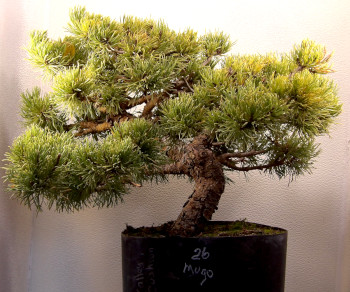
| Articles | Home Page | Images | Order Form | Plant Catalog |